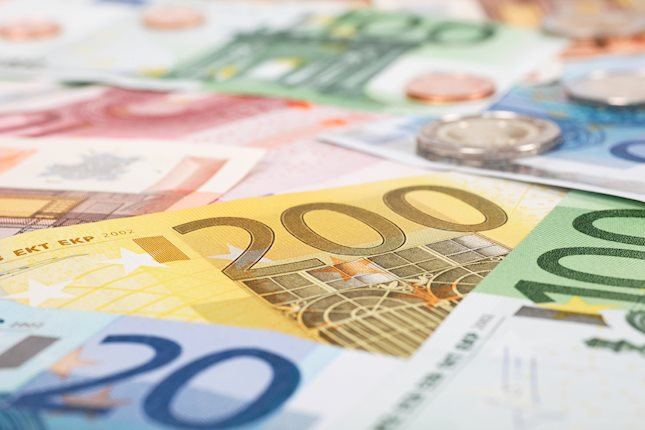- AUD/USD dropped to a one-week low on Monday and was pressured by a combination of factors.
- Bets for a 50 bps Fed rate hike in March, elevated US bond yields continued underpinning the USD.
- Geopolitical tensions also benefitted the safe-haven buck and weighed on the perceived riskier aussie.
The AUD/USD pair witnessed heavy intraday selling on Monday and dropped to a one-week low, though showed some resilience below the 0.7100 round-figure mark. A combination of factors provided a strong lift to the US dollar, which, in turn, contributed to the pair's early decline. The red-hot US consumer inflation figures released last week reinforced market expectations for a faster policy tightening by the Fed. This, along with a weaker risk tone amid fears around the Russia-Ukraine conflict, further benefitted the safe-haven greenback and weighed on the perceived riskier aussie.
The markets seem convinced that the Fed would adopt an aggressive policy response to combat high inflation and have been pricing in a 50 bps rate hike in March. The speculations were fueled by comments from St. Louis Fed President James Bullard, who reiterated calls for a faster pace of rate hikes. This, along with elevated US Treasury bond yields, acted as a tailwind for the USD. In fact, the yield on the benchmark 10-year US government bond shot back to 2%, closer to the highest level since mid-2019 touched last week in reaction to the hottest inflation reading in four decades.
Adding to this, worries over an imminent Russian invasion of Ukraine underpinned the buck. The US National Security Advisor Jake Sullivan warned on Friday that Russia could invade Ukraine before the end of the Winter Olympics in China on February 20. That said, Russia's Foreign Minister Sergey Lavrov eased worries and suggested continuing along the diplomatic path to extract security guarantees from the West. Lavrov told President Vladimir Putin that the United States had put forward concrete proposals on reducing military risks and that there was always a chance for agreement.
The latest development gave the market some comfort and led to a modest recovery in the risk sentiment, which, in turn, assisted the pair to rebound around 40 pips from the 0.7085 region. The attempted recovery got a minor lift during the Asian session on Tuesday following the release of the RBA monetary policy meeting, though lacked bullish conviction. The Australian central bank observed that inflation had picked up more quickly than expected, though reiterated that the Board is prepared to be patient as it monitors how the various factors affecting domestic inflation evolve.
Market participants now await the release of the US Producer Price Index (PPI) for January, due later during the North American session. Apart from this, the focus will be on the minutes of the FOMC January monetary policy meeting, scheduled for release on Wednesday. This might influence expectations about the Fed's next policy move and provide some meaningful impetus to the pair. Traders will further take cues from geopolitical developments, which will continue to play a key role in driving the broader market risk sentiment and producing trading opportunities.
Technical outlook
From a technical perspective, sustained weakness below the 0.7100-0.7090 area will suggest that a two-week-old uptrend has run its course and set the stage for further decline. The next relevant support is pegged near the post-NFP swing low, around the 0.7050 region, below which the pair could accelerate the fall towards the key 0.7000 psychological mark. The downward trajectory could further get extended and allow bearish traders to challenge the lowest level since June 2020, around the 0.6965 region touched on January 28.
On the flip side, momentum beyond the daily swing high, around the 0.7140 area, now seems to confront stiff resistance near the 0.7100 mark ahead of the 0.7200 mark. This is followed by a confluence barrier, comprising the 100-day SMA and a descending trend-line extending from October 2021, around the 0.7235 region. A convincing breakthrough will be seen as a fresh trigger for bullish traders and push the pair towards the 0.7300 mark en-route the January monthly swing high, around the 0.7315 region.
Information on these pages contains forward-looking statements that involve risks and uncertainties. Markets and instruments profiled on this page are for informational purposes only and should not in any way come across as a recommendation to buy or sell in these assets. You should do your own thorough research before making any investment decisions. FXStreet does not in any way guarantee that this information is free from mistakes, errors, or material misstatements. It also does not guarantee that this information is of a timely nature. Investing in Open Markets involves a great deal of risk, including the loss of all or a portion of your investment, as well as emotional distress. All risks, losses and costs associated with investing, including total loss of principal, are your responsibility. The views and opinions expressed in this article are those of the authors and do not necessarily reflect the official policy or position of FXStreet nor its advertisers. The author will not be held responsible for information that is found at the end of links posted on this page.
If not otherwise explicitly mentioned in the body of the article, at the time of writing, the author has no position in any stock mentioned in this article and no business relationship with any company mentioned. The author has not received compensation for writing this article, other than from FXStreet.
FXStreet and the author do not provide personalized recommendations. The author makes no representations as to the accuracy, completeness, or suitability of this information. FXStreet and the author will not be liable for any errors, omissions or any losses, injuries or damages arising from this information and its display or use. Errors and omissions excepted.
The author and FXStreet are not registered investment advisors and nothing in this article is intended to be investment advice.
Recommended Content
Editors’ Picks

EUR/USD stabilizes near 1.0550, looks to post weekly gains
EUR/USD continues to fluctuate in a tight channel at around 1.0550 in the American session on Friday as trading action remains subdued with US financial markets heading into the weekend early. The pair looks to end the week in positive territory.

GBP/USD loses traction, retreats below 1.2700
After climbing to its highest level in over two weeks at 1.2750, GBP/USD reverses direction and declines to the 1.2700 area on Friday. In the absence of fundamental drivers, investors refrain from taking large positions. Nevertheless, the pair looks to snap an eight-week losing streak.

Gold pulls away from daily highs, holds near $2,650
Gold retreats from the daily high it set above $2,660 but manages to stay afloat in positive territory at around $2,650, with the benchmark 10-year US Treasury bond yield losing more than 1% on the day. Despite Friday's rebound, XAU/USD is set to register losses for the week.

Bitcoin attempts for the $100K mark
Bitcoin (BTC) price extends its recovery and nears the $100K mark on Friday after facing a healthy correction this week. Ethereum (ETH) and Ripple (XRP) closed above their key resistance levels, indicating a rally in the upcoming days.

Eurozone PMI sounds the alarm about growth once more
The composite PMI dropped from 50 to 48.1, once more stressing growth concerns for the eurozone. Hard data has actually come in better than expected recently – so ahead of the December meeting, the ECB has to figure out whether this is the PMI crying wolf or whether it should take this signal seriously. We think it’s the latter.

Best Forex Brokers with Low Spreads
VERIFIED Low spreads are crucial for reducing trading costs. Explore top Forex brokers offering competitive spreads and high leverage. Compare options for EUR/USD, GBP/USD, USD/JPY, and Gold.
-637804990003296420.png)